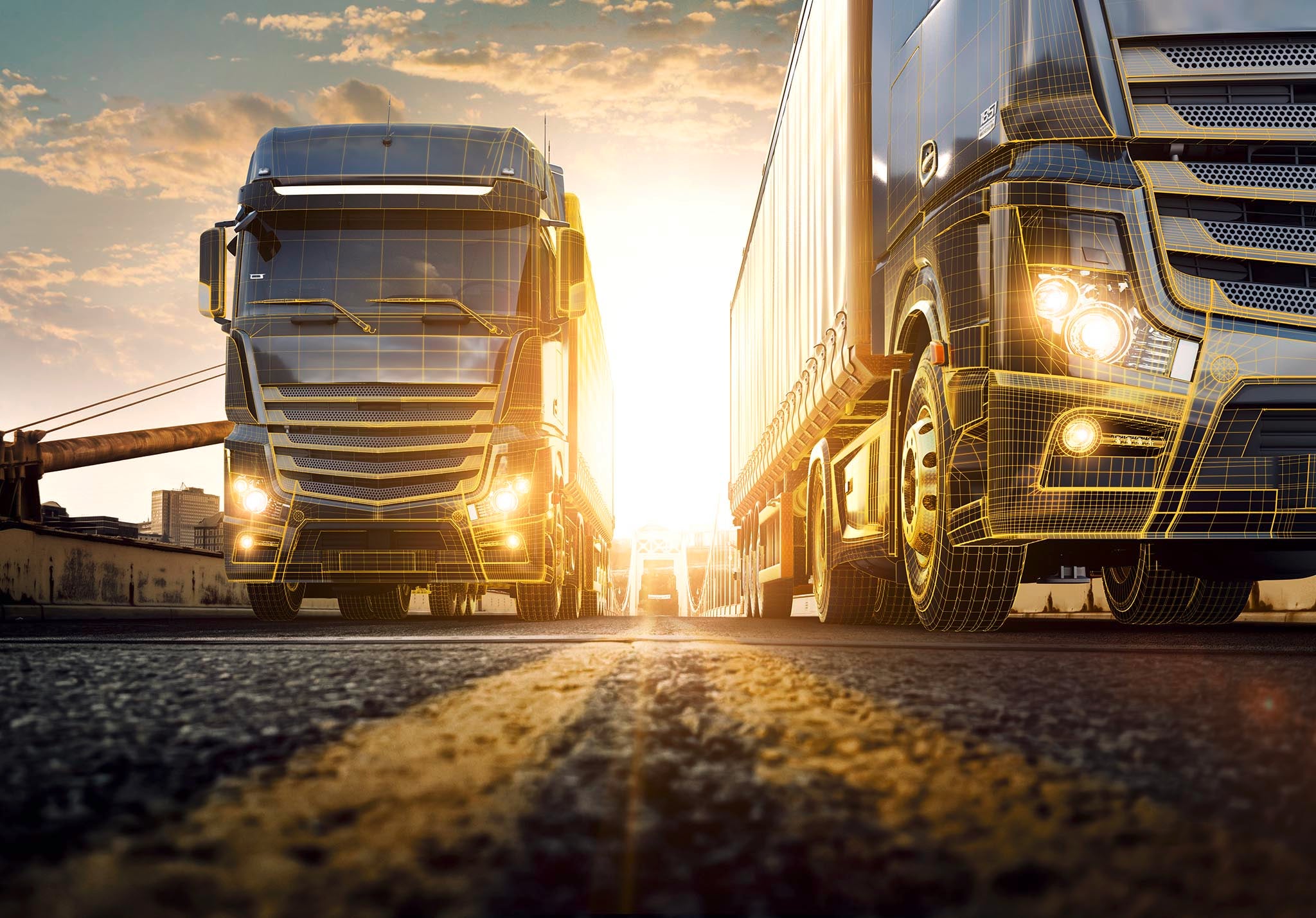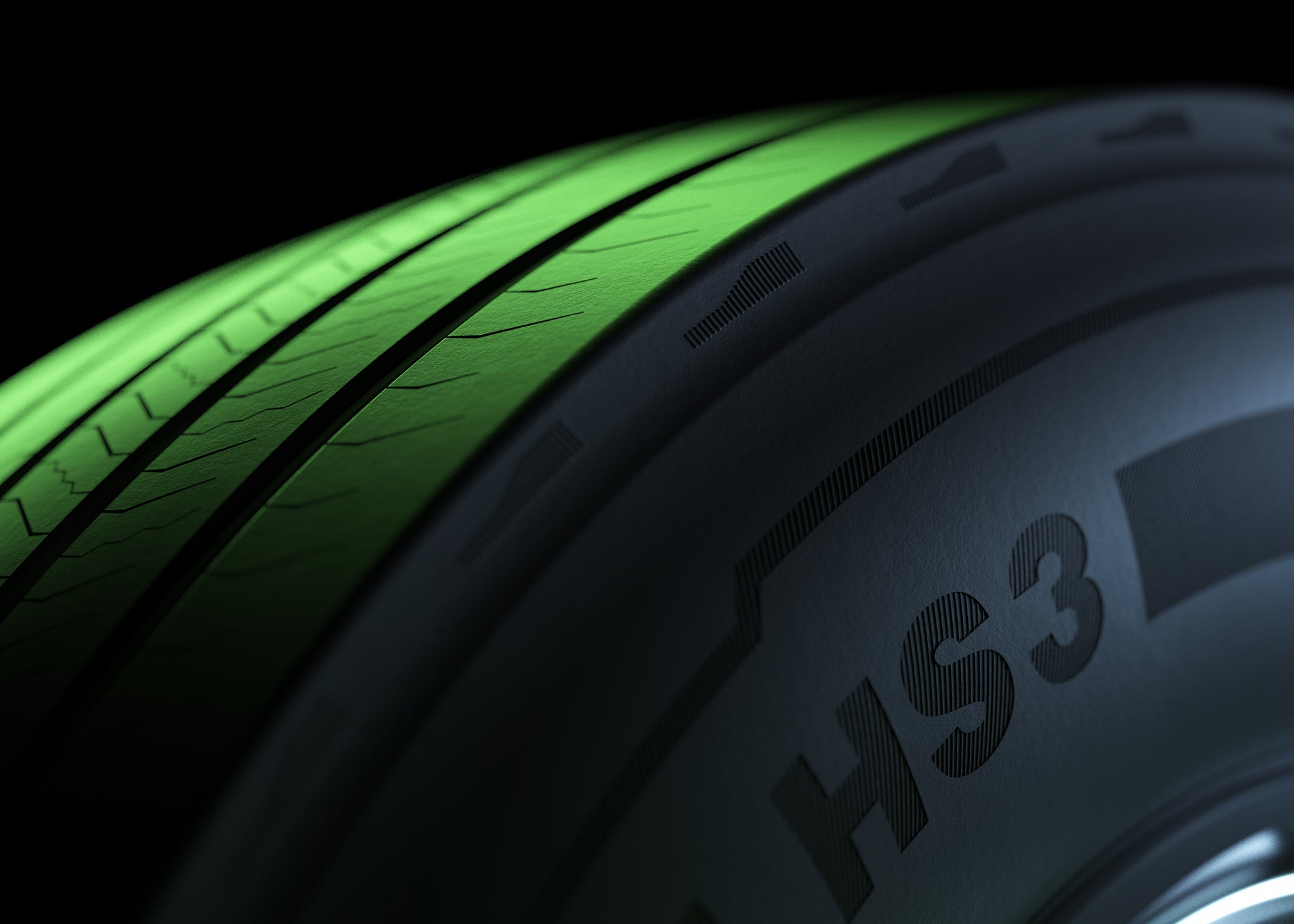# CO₂ Emissions & VECTO
Rolling back the CO2
Why rolling resistance is key to cutting CO2 emissions
Why rolling resistance is key to cutting CO2 emissions
Reducing carbon dioxide (CO2) emissions is a key goal for countries and industries as the world looks to fight climate change. Transforming transportation will play a major role, from improving the fuel efficiency of existing cars, trucks and planes, to introducing new electric vehicles and infrastructure. When it comes to trucks, lowering tire rolling resistance can significantly impact fuel consumption and CO2 emissions.
What role do trucks play in climate change?
1. Man-made greenhouse gas (GHG) emissions, including those from carbon dioxide, are one of the major contributors to global warming. The transport sector is one of the primary sources of these emissions, largely due to the need to burn fossil fuels in order to power cars, planes, ships, trains, trucks, and other vehicles. GHG emissions from Heavy-Duty Vehicles (HDV) in the EU, for example, represented 5% of total emissions, a fifth of all transport emissions, and about a quarter of road transport emissions in 2014.
2. To combat this, the EU plans to reduce GHG emissions by at least 40% below 1990 levels by 2030, as it looks to become the first climate neutral continent by 2050. For the transport sector specifically, the objective is to cut emissions on average by 15% from 2025 and by 30% from 2030. It should be noted that a new 2030 Climate Target Plan, currently under discussion, proposes to increase the reduction of overall GHG emissions to at least 55% below 1990 levels by 2030.
3. One of the things the EU is using to achieve its goal of reducing HDV emissions is the Vehicle Energy Consumption calculation Tool (VECTO). Since January 2019, vehicle manufacturers have been required to use VECTO to calculate the fuel consumption and CO2 emissions of all new HDVs. VECTO assesses a wide range of data to make its calculation. These parameters include: the type and weight of the vehicle; aerodynamics; engine and tire characteristics; transmission efficiency and axle configuration.
 Trucks with low rolling resistance tires
Trucks with low rolling resistance tires
How is rolling resistance linked to CO2 emissions?
Tire rolling resistance, which can be defined as the amount of energy a tire uses over a specific distance, is one of five forces that must be overcome for a vehicle to move forward. It is crucial to the debate around cutting CO2 emissions because rolling resistance is responsible for up to one-third of a truck’s fuel consumption. The more fuel a vehicle consumes, the more CO2 it emits. According to the EU, without further action, CO2 emissions from Heavy-Duty Vehicles are set to increase by up to 10% between 2010 and 2030. The good news is that it is possible to reduce a tire’s rolling resistance and, therefore, lower its CO2 emissions.
 Low rolling resistance truck tires
Low rolling resistance truck tires
How can you reduce rolling resistance?
There are a number of factors that affect rolling resistance:
- the design, tread and pressure of the tire itself
- the load and distribution of the vehicle
- the surface of the road
- the weather
The most significant factor in reducing rolling resistance concerns hysteresis – the process that happens when a tire flexes as it meets the surface of the road, leading to a loss of energy that inhibits forward momentum. See it explained in our infographic.
Important things to consider include: fitting tires that suit your mission profile best, optimal tire pressure; and making sure wheels are properly aligned. Alongside regular maintenance checks, these changes can improve rolling resistance, lower fuel consumption, and cut CO2 emissions.
 How external factors influence rolling resistance
How external factors influence rolling resistance